I have written a complicated code. The code produces a set of numbers which I want to plot them. The problem is that I cannot put those numbers in a list since there are 2 700 000 000 of them.
So I need to plot one point then produce second point (the first point is replaced by second point so the first one is erased because I cannot store them). These numbers are generated in different sections of the code so I need to hold (MATLAB code) the figure.
For making it more conceivable to you, I write a simple code here and I want you to show me how to plot it.
import matplotlib.pyplot as plt
i=0
j=10
while i<2700000000:
plt.stem(i, j, '-')
i = i + 1
j = j + 2
plt.show()
Suppose I have billions of i and j!
 Isn't this what you're trying to achieve? After all the input numbers aren't stored anywhere, just added to the figure as soon as they are generated. You don't really need Matlab's
Isn't this what you're trying to achieve? After all the input numbers aren't stored anywhere, just added to the figure as soon as they are generated. You don't really need Matlab's